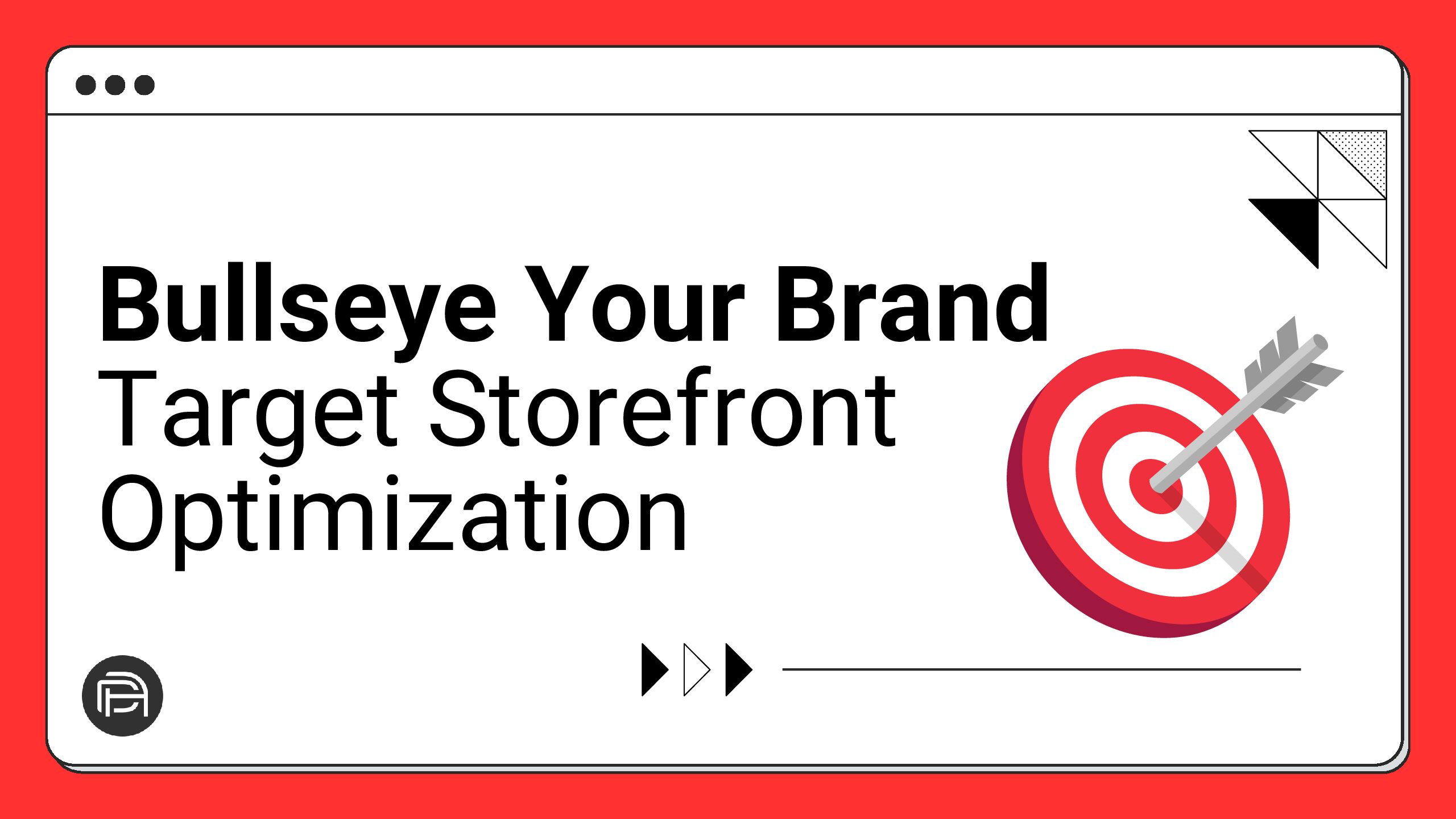Target’s eCommerce presence has risen steadily, claiming a significant 17.1% of its total sales in 2023. With a YoY growth rate of 4% as of 2023 and anticipated maintenance of positive growth in 2024, exceeding the $19.53 billion mark and projected to reach $23 billion in 2024, Target has carved its niche in the competitive online retail landscape.
As retail eCommerce expands, aspects of in person shopping are being digitized. The nostalgic walks through our favorite stores are now replaced with scrolling through beautifully crafted brand pages or storefronts. Instead of viewing items laid out on tables and racks, Target’s customers now have access to categorized virtual shelves, allowing them to find exactly what they’re looking for with the click of a button.
Why should brands consider establishing a Target Brand Page?
Brand Identity: Establish your brand values while communicating your story to the Target audience. What sets your brand aside? Why should the Target shopper try your products? Use this tool to educate visitors and differentiate yourself from competitors.
Product Showcase: Display your full range of products where customers can view your full assortment. Organize your offerings by category and utilize engaging creatives to capture customers’ attention. This is a great opportunity to encourage brand loyal customers to branch out and try different products that you offer.
Customer Engagement: Your brand page also provides customers with a landing page to interact and engage with your content. Showcase the best you have to offer – reviews, ratings, and comments to encourage community building.
Brand Authority: Searching for a specific product on Target.com may lead to competitor products being displayed in the search results. By having a brand store, customers have a one stop shop where they can view brand specific products without any distractions from competitor targeting.
How Can You Optimize Your Target Brand Page?
Product Selection and Positioning: Carefully choose your product grid. Do you want to drive more profits? Place higher margin products first so customers consider them sooner. Or do you want to prioritize engagement? Place best sellers higher up on the product grid to interest customers. Running a promotion? Place items with deals higher up in the grid. Product placement is important based on what your goals are.
Keyword Research: Identify high-volume, relevant keywords and integrate these keywords naturally into product titles, descriptions, and categories. This will allow your product to rank higher in search pages, increasing traffic to your PDPs and Brand Page.
Content & Visual Storytelling: Highlight your brand story, product benefits, and how your offerings address specific customer needs. Really lean into your value proposition. Utilize High-Quality Videos & 360° product views to enhance product visualization and engagement.
Continuous Optimizations: Ensuring that your brand page is current by using seasonal imagery and language as well as updated creatives will enhance your competitiveness. A/B Test different components of the page to gain a better understanding of your target audience.
Target’s e-commerce growth trajectory is indicative of its success in the competitive online retail landscape. As traditional in-store experiences transition to digital platforms, establishing a Target Brand Page offers brands an opportunity to cultivate their identity, showcase products effectively, engage with customers, and assert authority in their respective niches. By leveraging these strategies, brands can enhance their presence on Target’s platform, drive sales, and foster lasting connections with their audience.
Need a hand understanding Target’s strengths and aligning your offerings with their strategic vision? Direct Agents can unlock your Target storefront’s significant growth potential. Reach out to [email protected] to get started!
Juhi Nandwani, Senior eCommerce Analyst
Nicholas Galante, VP of eCommerce



